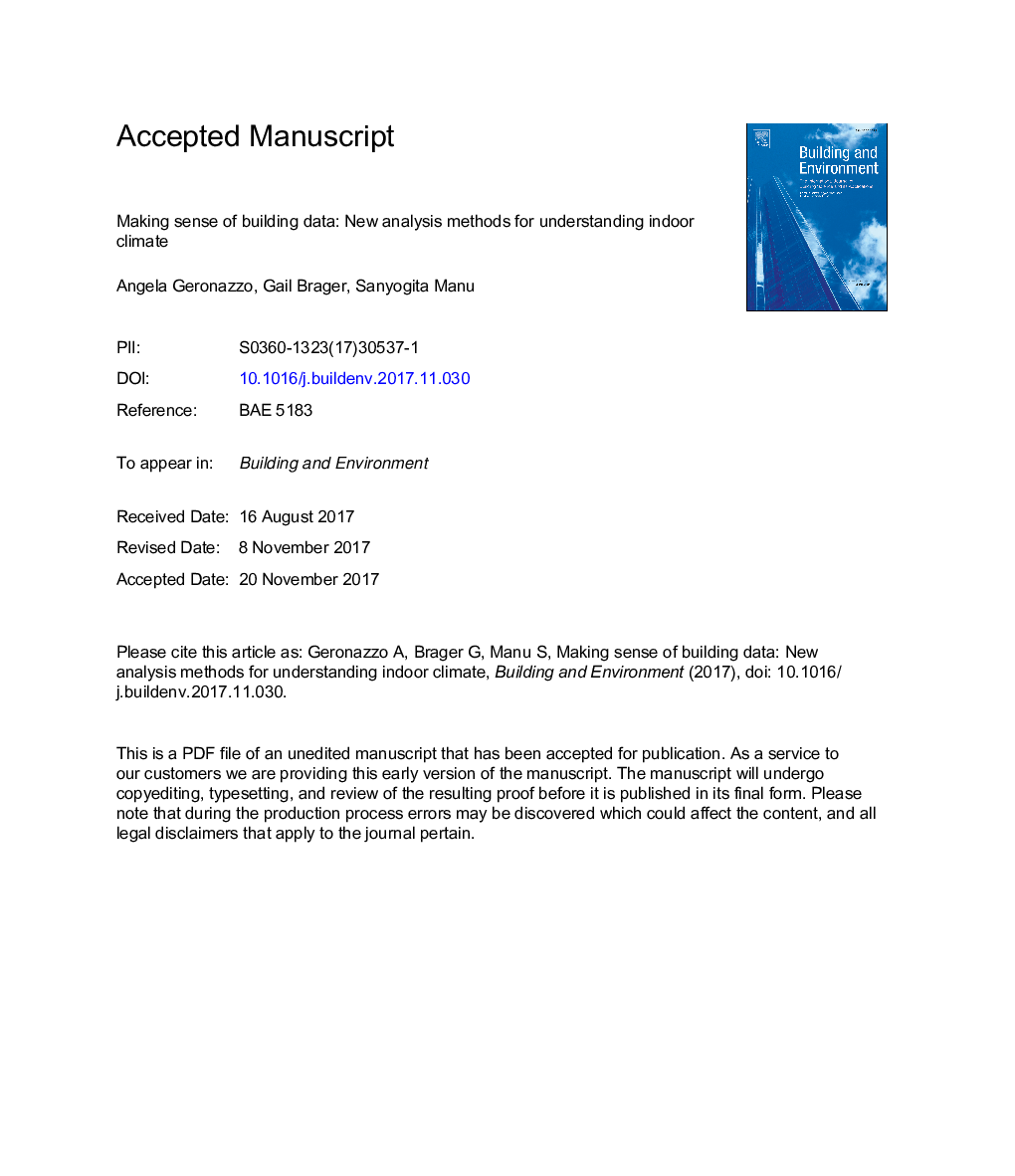| Article ID | Journal | Published Year | Pages | File Type |
|---|---|---|---|---|
| 6698371 | Building and Environment | 2018 | 18 Pages |
Abstract
This work presents a novel approach for exploratory analysis of indoor environment measurements. Building monitoring is a complex task constrained by technological and environmental limits. Monitoring processes can be long, employ multiple sensors and equipment, and may involve multiple buildings across extended periods. Once the data is collected, it's not always straightforward how to make sense of it. When faced with complex heterogeneous amounts of data, early exploratory analysis is helpful to make sense of the broad patterns, highlight data weaknesses and features, and identify directions for more in-depth analysis. Inaccuracy, incompleteness and inconsistence are common characteristics of monitored field data, which then often needs intensive pre-processing to address data quality issues and improve data analysis results. This paper describes techniques from computer science, such as decision tree induction and others, that are not normally applied to field measurements of indoor environments in buildings, and as an example applies them to a complex set of data from climate-responsive spaces in India. The findings illustrate the power of these techniques for using simplified measures as proxies to extract more sophisticated information about building operation, and for quickly identifying patterns in how different design and operational characteristics affect thermal comfort.
Related Topics
Physical Sciences and Engineering
Energy
Renewable Energy, Sustainability and the Environment
Authors
Angela Geronazzo, Gail Brager, Sanyogita Manu,
